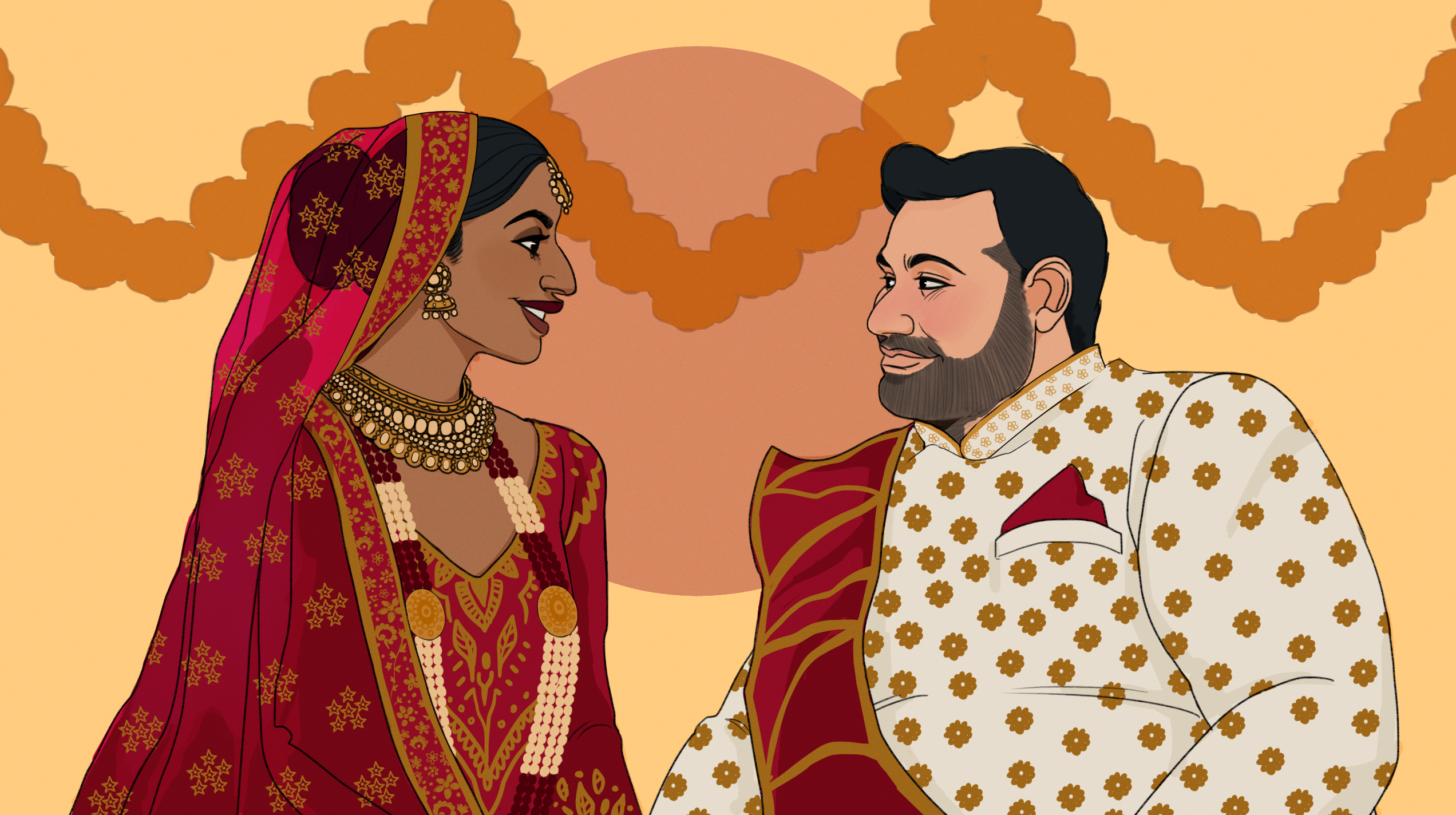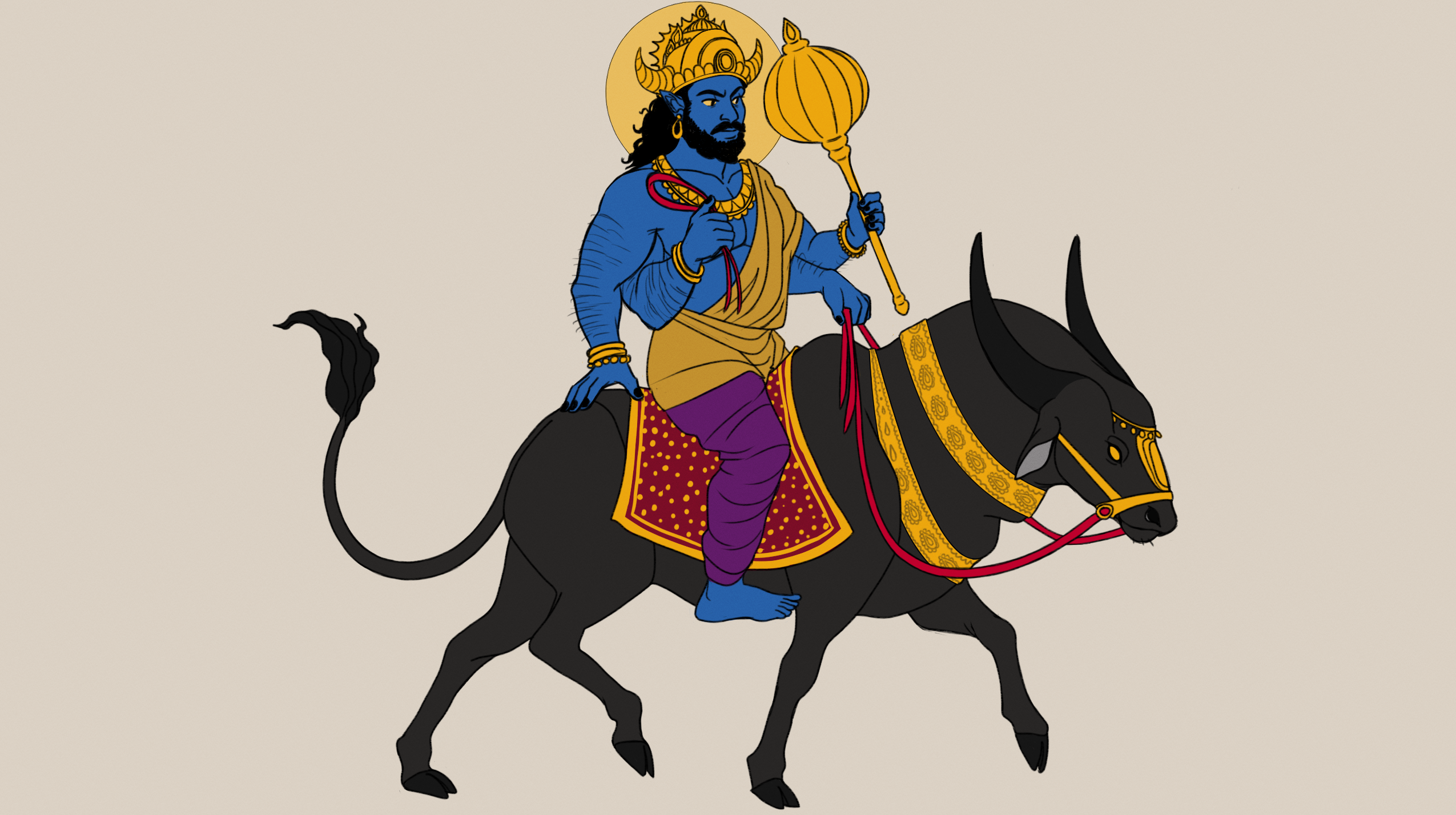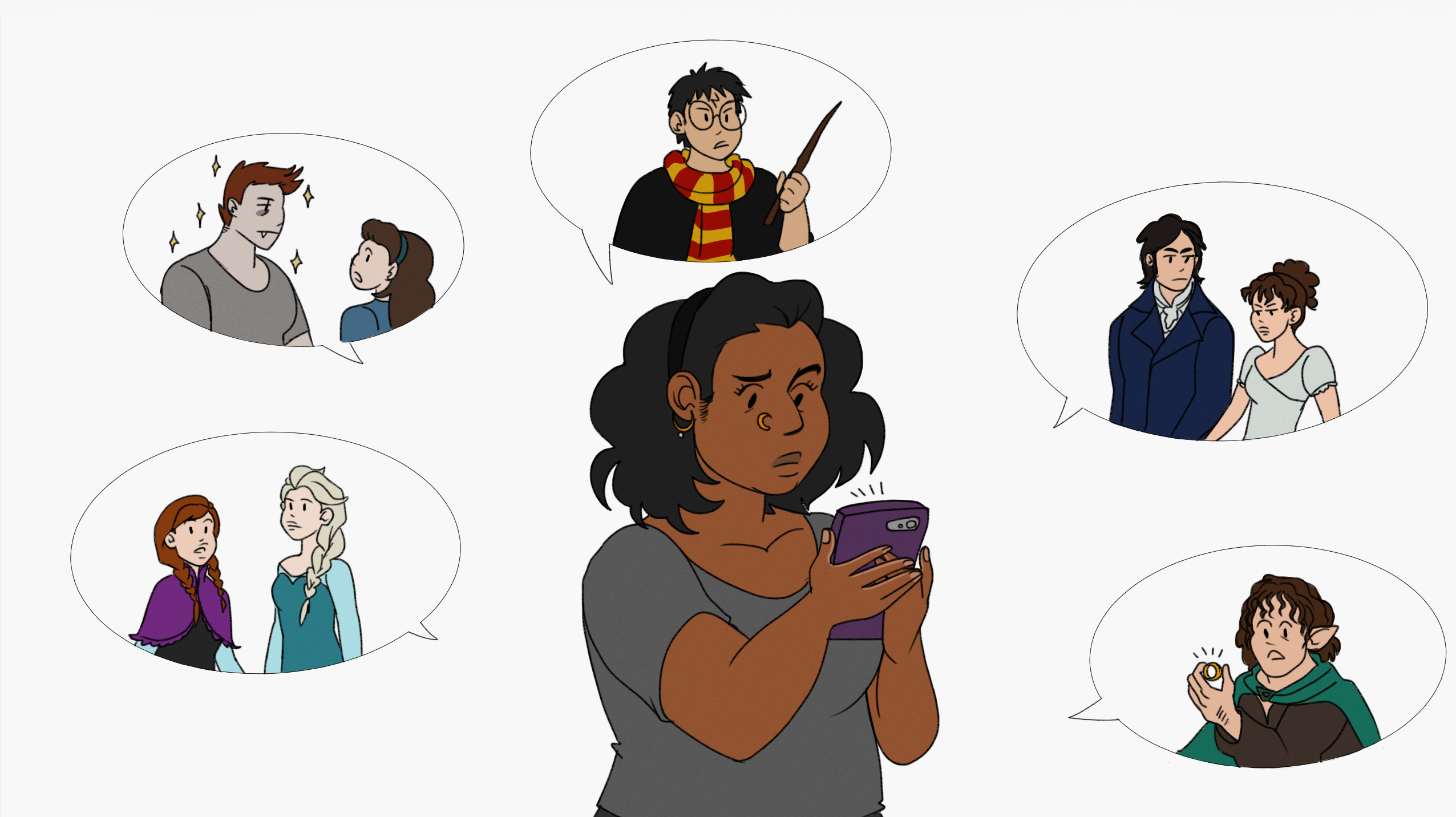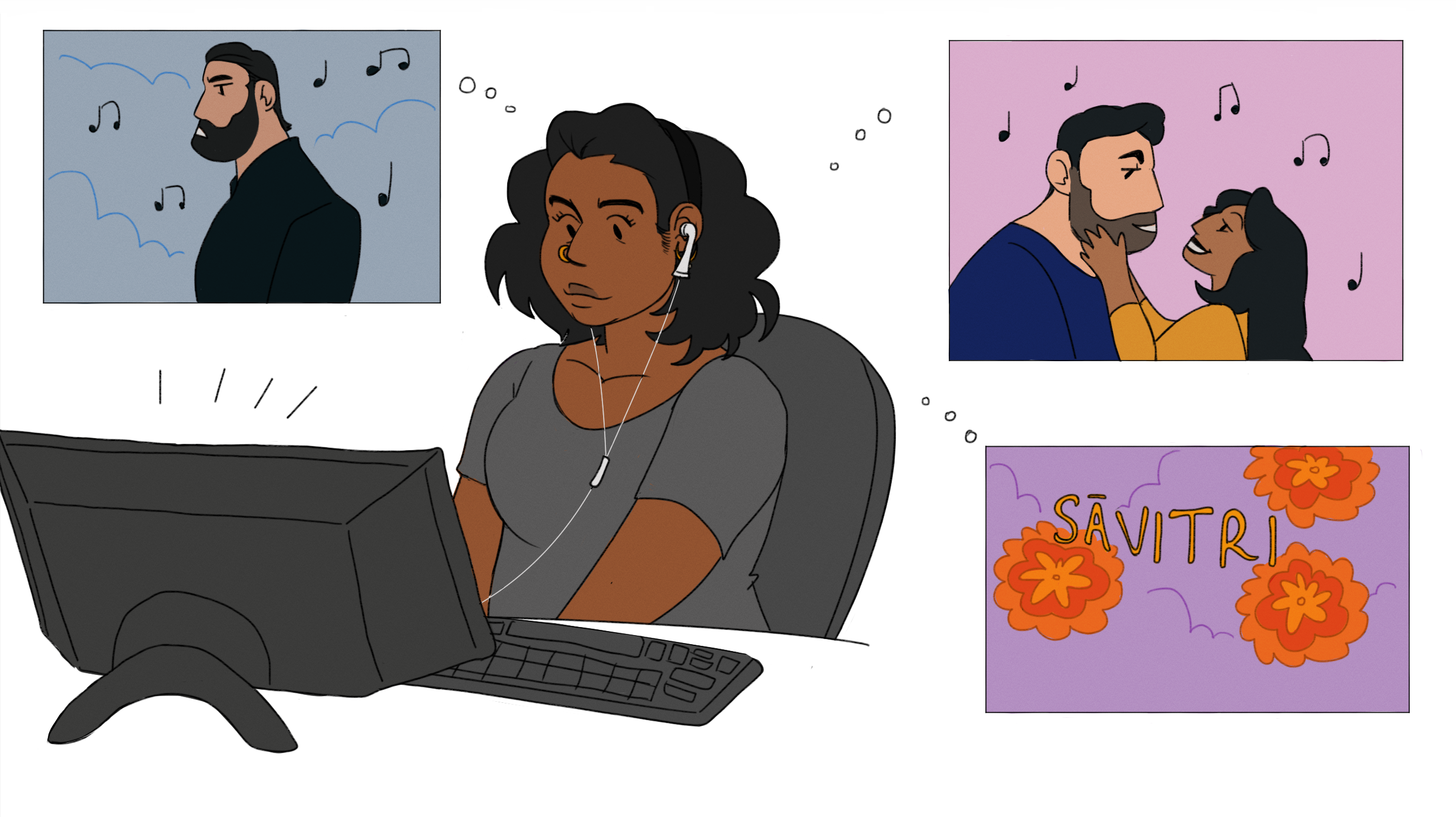When I first watched Against the Grain Theatre’s production of Gustav Holst’s Sāvitri I wasn’t sure what to expect.
I knew I was excited to be watching an opera about the Sāvitri story, one of the first Hindu myths I learned about, and a favourite of mine. Sāvitri, a South Asian princess, is gifted to her parents by the sun god Savitr after 18 years of praying for a child. The princess grows up into a woman so beautiful and pure that men are intimidated to marry her. With no man brave enough, Sāvitri goes on a journey to find herself a husband and comes across the exiled prince Satyavan who now lives in the forest with his parents. They fall in love and she marries him…even after learning that Satyavan is fated to die exactly one year after their wedding. A year later, Yama, the God of Death, arrives and takes Satyavan. Sāvitri, unwilling to accept her husband’s death, follows Yama on foot all the way to the gates of the underworld. Her devotion to Satyavan impresses the god and he offers her three wishes throughout her journey…though stipulates none can be for Satyavan’s life. Sāvitri asks for her father-in-law’s eyesight to be restored, for his kingdom to be returned to him, and to be the mother of a hundred children. Yama grants her all those wishes but upon granting her last wish, Sāvitri informs him of the vow she made to never have children with anyone but Satyavan. Outwitted, Yama has no choice but to bring Satyavan back to life.
It’s an incredibly romantic story and it’s easy to see why Holst would choose this myth for his opera. After all, what’s not to love about a princess saving a prince or Death being portrayed in a nobler manner? In fact, despite being of Hindu/South Asian origin, Sāvitri is a very Western-feeling tale. That is, it’s a story that follows a lot of ideas and values that Western society is very familiar with. On a basic level, it’s romantic portrayal of Yama, the God of Death, feels similar to portrayals of Hades from Greek mythology or Death in Gothic Romance. And the story itself, that not even love can conquer death, explores a concept that is universally understood. Everyone understands the fear of losing love and the lengths people will go through to save a loved one. As such, it’s a story that works well for a Western audience.
But Sāvitri is not a Western story. It is a South Asian, Hindu, myth well known throughout India. And it is a story originally intended for a South Asian audience. As I originally mentioned in my review of Sāvitri, South Asia has historically been fetishized by the West. Stories and myths from this region get filtered through a Western lens and often imbued with Christian ideology. In these new, filtered versions, different deities often take the role of God and the Devil, and a very black and white view of morality. Holst’s Sāvitri definitely has this problem, especially in how the composer understands Maya and the gods. So, as excited as I was to see Sāvitri, I was wary about how AtG would interpret this opera.
Considering that I’m still talking about it, AtG obviously overcame many of the concerns I had. True, they remained faithful to Holst’s arias and Western classical score, but their presentation was authentic and culturally sensitive. Sāvitri was beautiful to watch, faithful to the emotion of the original myth, and had good South Asian representation throughout the opera. As a South Asian woman, I was thrilled to see myself represented in this opera. I was thrilled to realize that the opera world had South Asian singers. And seeing my culture represented in opera…in an art form I grew up associating as strictly European or white…Sāvitri truly moved me. And it managed to speak to me as a person of diaspora.
I’ve always believed that art is the truest form of human emotion. That we need art to nourish our soul and establish our existence as human beings. Yet, as a South Asian woman growing up in Canada, the idea of art, and how it related to me, was always tricky to navigate. The content I consumed in my childhood was predominantly European/white with Christian undertones. In school, the height of literature were works by authors like Kafka, Hemmingway, the Brontës, Shelley, Shakespeare, etc. I learned about Greek tragedies, such as the Oresteia, Odyssey, and Aeneid. In contemporary media, there was Twilight, Hunger Games, Lord of the Rings, Star Wars—all works which explore very Western ideas of existence, beauty, and power. Rarely did I see or read about people who look like me. Nor did I see my culture being portrayed accurately to my experience. Instead, continually throughout my life, I’ve been reminded that the art in my life wasn’t usually made for BIPOC communities. And when they were…. often, they missed the mark.
BIPOC communities growing up in the west inhabit a very distinct space where we’re both too Western… and too non-white. We grow up both connected and disconnected to our culture, wanting to fit in yet unsure how to do so with respect to our diasporic identity. Worse, many of us often go through a period where we actively ignore or dismiss our nonwhiteness, or other aspects of our identity, to avoid ostracization. Rarely do we get to see a blending of these two worlds, we inhabit, that accurately captures the experiences we go through. Which can be quite confusing and frustrating.
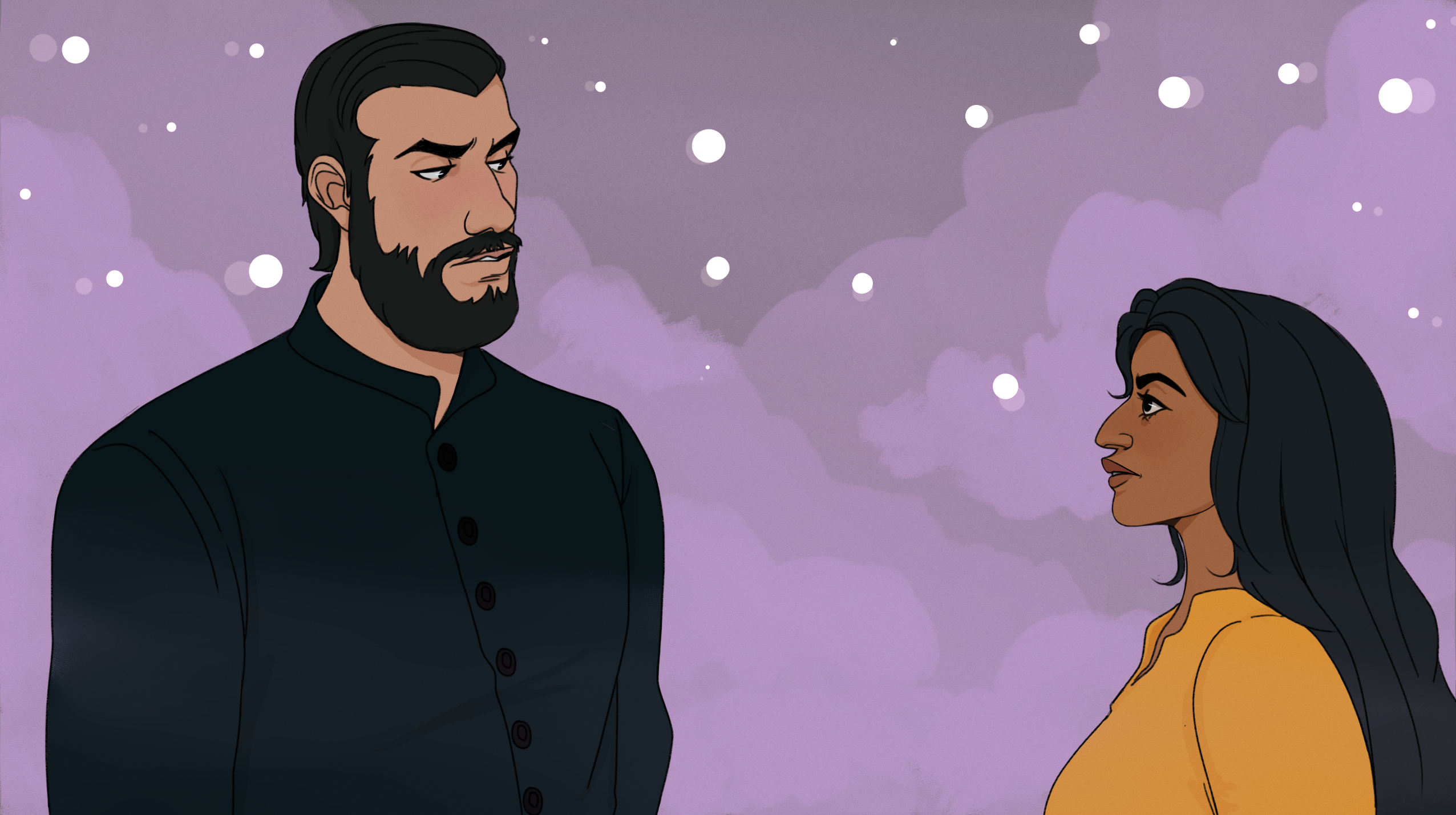
Vartan Gabrielian (Yama, God of Death) & Meher Pavri (Sāvitri) in AtG’s Sāvitri. Illustration by Kemone Moodley
Of all the art forms I’ve grown up with, opera was the most unknown to me. In fact, my current love for opera only started last year when a friend introduced me to it and has grown since working at Opera Canada. In fact, thanks to Opera Canada and the opportunities I’ve gotten to immerse myself more in opera culture, my appreciation for opera has only deepened. Opera is emotive, vibrant, soul lifting. And I’m delighted to be a fan.
But, up until that introduction, I only knew opera by its stereotypes. That it wasn’t meant for young people. That it was “less fun” than musical theatre. A form of art that was stuffy, usually meant for a richer, more “sophisticated” audience, and overall generally unwelcoming to most people. And, until I saw Sāvitri, it didn’t occur to me that opera could be for me too.
Logically I knew opera was making strides to include more BIPOC voices. And obviously, there are BIPOC artists who work in opera now. But I didn’t’ see them nor was I exposed to their performances until last year. Because I didn’t grow up seeing people who looked like me in opera, I didn’t know that I could become an opera singer or opera director. Nor was opera ever presented to me as something that a non-white person could watch for fun.
I certainly didn’t know that there were South Asian opera singers until I watched Sāvitri. That opening night, watching Meher Pavri sing, it suddenly clicked that opera had space for me. And as the opera continued, and the story unfolded, I felt appreciated for being South Asian…celebrated even. I have no plans to become an opera singer. But I don’t think I can truly articulate the sudden confidence, enthusiasm, and inspiration I felt watching this opera and realizing that, yes, I can be here too. AtG’s Sāvitri is important because it shows BIPOC the possibilities of loving opera. Whether it be as an artist, or becoming a fan, operas like AtG’s Sāvitri are necessary to reach a broader, more diverse, audience. Culture—stories and art—only improve when you have more perspectives to consider. And, considering that stories are incredibly important in creating compassion and understanding between different groups of people, it’s important that opera continue to broadcast the perspectives of BIPOC.
Since its premiere, I’ve seen Sāvitri four times now and honestly? I’m probably going to watch it another four more times. I’ve gotten most of my friends to watch it and talk about it with me. And, as you can see throughout this article, I’ve even drawn some artistic inspiration from this opera. Rarely am I moved to make art of stories that aren’t my own. Yet here I am, creating art for an opera that I just can’t stop talking about.
And that’s amazing to me.
 Kemone Moodley is a writer and artist from Abbotsford, British Columbia. She has a BA in English from The University of the Fraser Valley and is currently pursuing her MA in journalism at Ryerson University.
Kemone Moodley is a writer and artist from Abbotsford, British Columbia. She has a BA in English from The University of the Fraser Valley and is currently pursuing her MA in journalism at Ryerson University.

